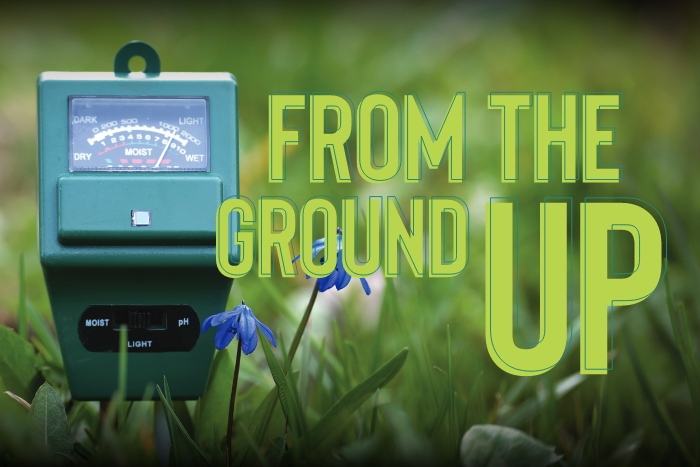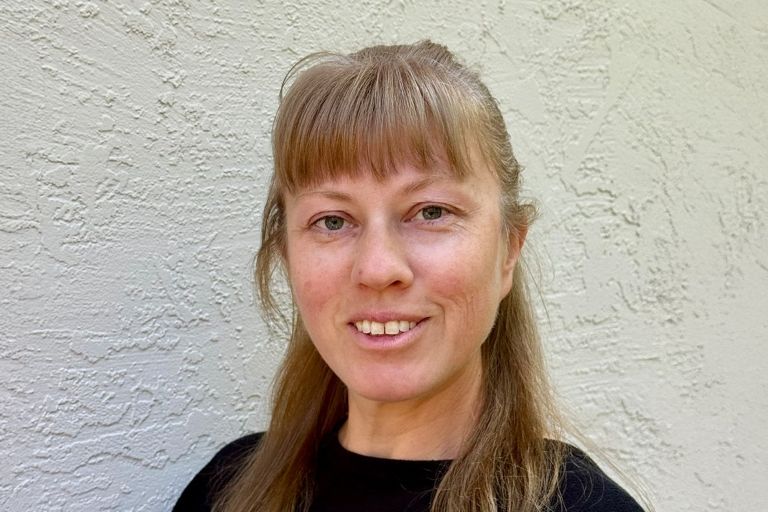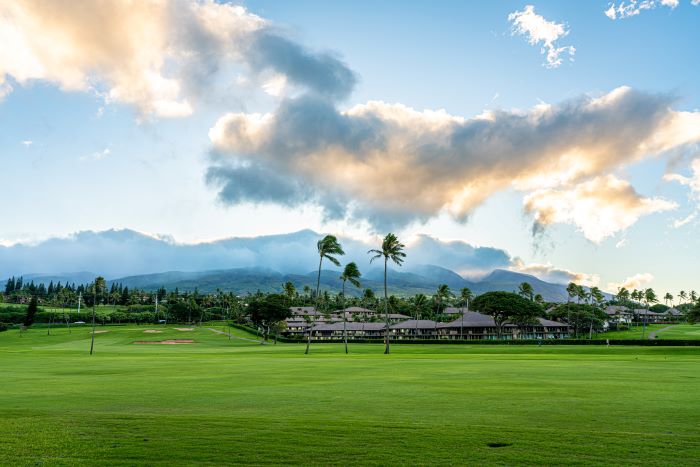Soil moisture sensors are a powerful tool for residential and commercial irrigation. That’s because they provide real-time data on actual soil conditions, allowing irrigation to be based on plant need rather than fixed schedules, notes Bob Beers, HydroPoint director of product management.
“When integrated with a smart irrigation controller, these sensors enable real-time tracking of evapotranspiration — the rate at which water is lost from the soil through evaporation and plant transpiration,” says Beers. “By pairing soil moisture data with ET estimates, irrigation decisions become far more precise, reducing water waste while keeping landscapes healthy. This integration helps homeowners save water, protect plant health and respond intelligently to changing weather or microclimate conditions.”
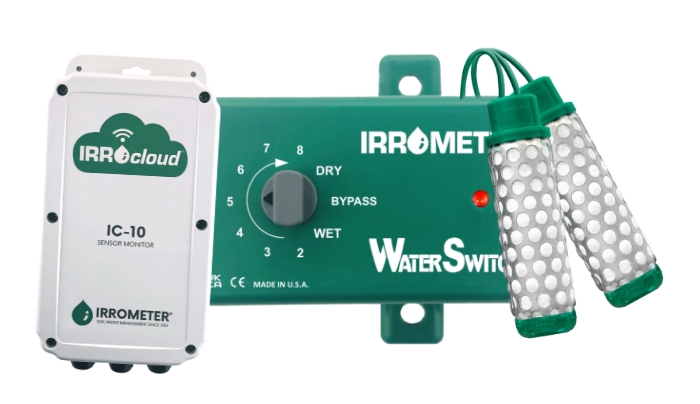
Soil moisture sensors’ data-driven approach eliminates much of the guesswork involved in irrigation decisions, notes Wes Dyer, Irrometer agronomist. “Access to real-time data allows for better informed decision-making,” he says, adding that sensors serve as one tool in the toolbox to improve decision-making and irrigation efficiency.
Given the sheer number of residential landscapes and their corresponding irrigation square footage, small resource management improvements could have a significant impact on resource reduction, notes Keith Schweiger, QWEL, CID, CLIA, CIT, CIC, CLWM, Calsense technical sales representative.
He concurs that sensors are another tool to assist the owner or contractor in sustainability while still creating a desirable landscape appearance.
According to Beers, the three main types of soil moisture sensors used in irrigation include:
- Volumetric sensors, which measure the dielectric constant of the soil to determine water content. They offer high accuracy and real-time tracking, making them ideal for integration with smart controllers managing irrigation based on soil moisture and ET data. Dyer noted volumetric water content sensors are well suited for tracking how much water is stored in the soil profile, making them ideal for managing irrigation volumes and identifying refill points.
- Tensiometers, which measure how tightly water is held in the soil and reflect plant-available moisture. They’re best used in wetter soils but require maintenance and are less effective in drier conditions. “Tension-based sensors measure how hard plants must work to extract water from the soil, offering insight into when irrigation is truly needed based on plant-available water,” Dyer adds.
- Capacitance-based sensors, which measure soil moisture by assessing changes in electrical capacitance. They’re generally cost-effective and responsive but may be less precise than volumetric sensors.
“Choosing the right sensor depends on soil type, desired level of automation, system compatibility and need for ET-based irrigation control,” says Beers. “For smart systems, volumetric sensors with ET integration capabilities offer the most scalable and accurate performance.”
Soil moisture measurement methods are generally categorized as either direct or indirect, Dyer notes. “Direct methods range from precise instruments like tensiometers to gravimetric sampling where soil is weighed before and after drying to determine its moisture content,” he says. “Even the classic touch-and-feel method falls into this category. While subjective, it provides quick, practical insight when instruments are unavailable.”
Indirect methods estimate moisture by observing changes in related properties such as electrical conductivity or reflectance, Dyer says. Examples include capacitance and time-domain reflectometry sensors, as well as satellite imagery that infers moisture levels through spectral analysis.
The choice should be driven by the right product for the application, as with other irrigation components, says Schweiger. “In the landscape arena, the amount of moisture can be shown as a numerical value,” he adds. “This value can then become a benchmark for the manager, who looks at the condition of the site relative to plant health to make irrigation decisions.”
Schweiger notes while it is not an exact science, using SMS can assist with the managers’ philosophy on automation or just information. “Soil contains air, water, organic matter and individual soil textural particles,” he says. “A desirable soil contains a proper mix of these items. The water management goal with SMS is to provide data noting how much water is in the soil at a given moment, when the soil is considered saturated or ‘full,’ and when to ensure irrigation is allowed so as not to cause excessive plant stress or death from being too dry.”
“Since the goal is a healthy landscape with the least number of inputs, using SMS will often provide a higher level of information.”
— Keith Schweiger, QWEL, CID, CLIA, CIT, CIC, CLWM, technical sales representative, Calsense
Schweiger says there are several types of moisture measuring device protocols. “Each soil or site has its own ‘personality,’ and while different soil types — clay, silt, sand and combinations thereof — all have ranges of water volume within them, volumetric sensors assist by providing feedback regarding the volume of moisture within that profile,” he says.
This type tends to be easier to use as it provides unique values when the soil is saturated, dry or in between, Schweiger says, adding this relative type of measurement theoretically does not require the user to know the soil type.
“Tensiometers are our oldest SMS and measure the amount of suction or tension the soil is exerting in the movement of moisture,” says Schweiger. “They are used mostly in the agricultural arena, cannot freeze, require some calibration in their location and continue to be used successfully.”
Schweiger points out that capacitance-based meters are a subset of dielectric sensors using an electrical impulse or energy that is measured between probes or along a transmission path. The amount of moisture within the soil directly impacts the readings of the charge or impulse. This allows benchmarks relative to saturation, dryness and something in between to be known. “The simplicity of taking readings while viewing the site to determine when and when not to irrigate makes them an effective and simpler device to use,” he adds.
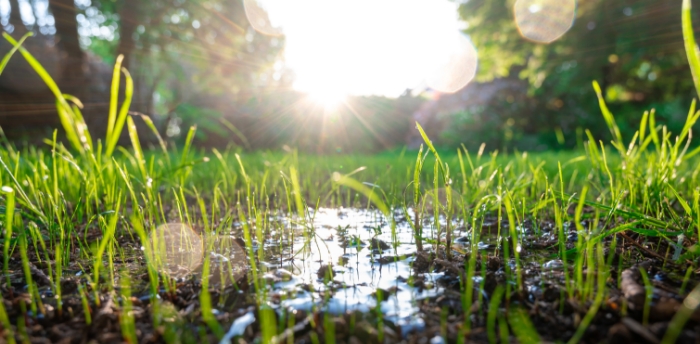 Smart irrigation controllers make it easier to integrate soil moisture sensors directly into irrigation systems, notes Dyer. “Many controllers now come with built-in compatibility or add-on modules allowing sensors to connect through dedicated sensor ports or interrupt circuits,” he adds. “When installed, these sensors can override scheduled irrigation if soil moisture is already adequate, effectively bypassing unnecessary watering cycles.”
Smart irrigation controllers make it easier to integrate soil moisture sensors directly into irrigation systems, notes Dyer. “Many controllers now come with built-in compatibility or add-on modules allowing sensors to connect through dedicated sensor ports or interrupt circuits,” he adds. “When installed, these sensors can override scheduled irrigation if soil moisture is already adequate, effectively bypassing unnecessary watering cycles.”
“When connected to a smart irrigation controller, the sensor data is used to automatically adjust irrigation in real-time based on both soil moisture and localized ET data,” Beers says. “This allows irrigation to occur only when needed — no more guesswork or overwatering. Some sensors also support wireless connectivity, making installation easier across large or complex landscapes. The controller interprets data from the sensors and ET algorithms to determine how much water, if any, is needed at a given time, ensuring smarter water use.”
On residential and most commercial properties, having the sensor directly interface could provide the simplest and greatest benefit, says Schweiger. “There are some manufacturers who have SMS products that only function when connected with their controller or products, while other manufacturers have products that can piggyback or be more of a universal add-on to many different manufacturers’ controllers,” he adds.
Dyer points out, “In turfgrass, ornamental landscapes and garden beds, sensors provide insight into the moisture needs of specific plant materials, helping prevent stress from under- or overirrigation. In agricultural settings, they are widely used to optimize irrigation for crops, orchards and vineyards, supporting both yield and water efficiency.”
Beers notes in residential settings, soil moisture sensors are ideal for:
- Lawn zones, where they prevent unnecessary watering and adjust for seasonal changes.
- Garden beds and planters to protect sensitive plants from over- or underwatering.
- Drip irrigation systems, where efficient, low-flow watering can be dialed in based on real-time soil moisture and ET.
- Green roofs or walls, where lightweight growing media requires precise water control.
Integrating ET tracking helps these applications become even more efficient, adapting dynamically to weather, plant demand and soil characteristics, Beers says.
Practical applications boil down to when and how long irrigation should occur to meet a site’s requirement, says Schweiger. “Since the goal is a healthy landscape with the least number of inputs, using SMS will often provide a higher level of information,” he adds. “This information may be used for water use, plant health and safety considerations in athletic spaces. Some sensors also measure soil temperature or salinity content of the soil/water, managing the use of higher salt content water, which often is due to using reclaimed water sources critical for plant and soil health. [These sensors also measure] moisture levels at various plant root depths to accommodate the type of plant.”
Measurement of soil temperature for proper timing of chemical applications helps increase application efficacy, Schweiger adds.
Soil moisture sensors conserve water by ensuring irrigation is applied only when necessary, Dyer notes. Measuring actual soil moisture levels prevents overwatering and reduces runoff, leading to lower water use and cost savings. “This precision supports plant health by avoiding the stress caused by too much or too little water,” he says, adding that healthier plants then require fewer inputs like fertilizers and pesticides, improving overall efficiency.
“With real-time ET tracking, systems can adapt to natural evaporation and plant transpiration, minimizing overwatering after rain or during cool periods,” Beers says, adding that can reduce outdoor water use by up to 60%, lower water bills and extend the life of irrigation components.
Environmental benefits also include reduced runoff, healthier landscapes and better compliance with local watering regulations.
“With real-time ET tracking, systems can adapt to natural evaporation and plant transpiration, minimizing overwatering after rain or during cool periods.”
— Bob Beers, director of product management, HydroPoint
Offering soil moisture sensors integrated with smart controllers provides a clear value proposition: smarter irrigation with measurable savings, notes Beers. “It’s a win-win,” he says. Clients enjoy healthier landscapes and lower water bills while contractors differentiate themselves with cutting-edge, sustainable solutions. These systems also reduce callbacks by improving irrigation performance and allowing for remote monitoring. Contractors who educate clients about the benefits of real-time soil moisture position themselves as forward-thinking water managers, not just irrigation installers.”
Contractors can leverage soil moisture sensors as a proactive tool to shift from reactive troubleshooting to preventative care, Dyer notes.
Given the more advanced nature of using SMS effectively, contractors that choose to will be deemed to be better or more aware of client views, water use, conservation goals and plant health, says Schweiger, noting the higher value offering should afford them higher revenue opportunities.

